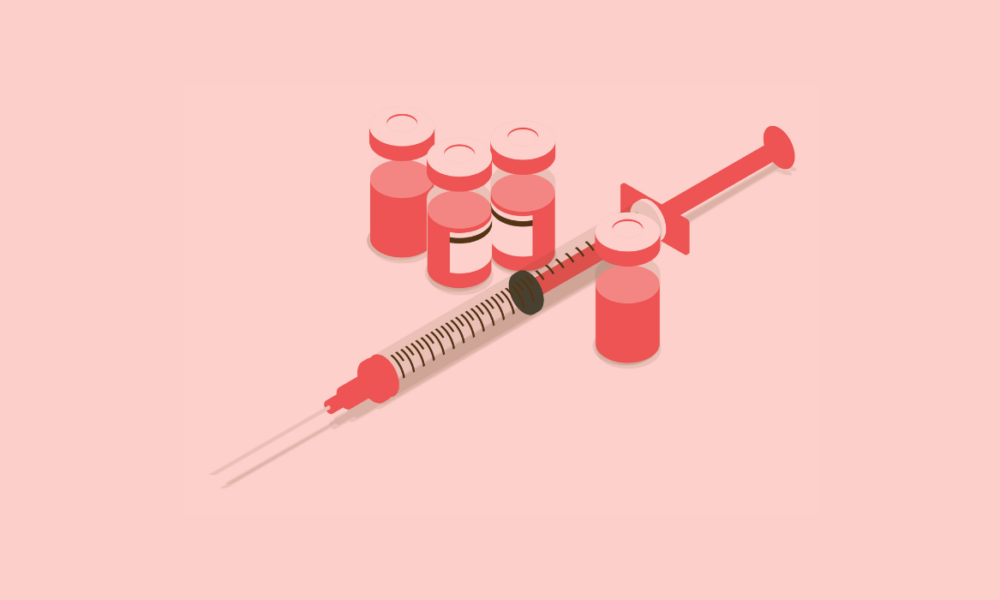While COVID-19 vaccination continues to dominate public consciousness, the rate of vaccination for other diseases has decreased. In Canada, recent estimates show that up-to-date routine vaccine coverage was five per cent lower in children compared to the pre-pandemic rate.
The fear of contracting COVID-19 at the doctor’s office is one likely cause for the decline of routine vaccination rates in Canada. Citizens in high-income countries, and those with universal health care such as Canada, enjoy the privilege of a government that has the means to vaccinate its people. But what happens when countries cannot afford to purchase enough vaccines for everyone?
This is a question commonly asked in the context of human papillomavirus (HPV), the world’s most common sexually transmitted infection (STI). In an interview with The McGill Tribune, Eduardo Franco, chair of the Department of Oncology and professor in the Department of Epidemiology, Biostatistics and Occupational Health at McGill, explained that not all types of HPV are equally worrisome.
“Some HPV types are commensal and don’t cause any disease or clinical manifestation,” Franco said. But: “There is a sub-genus that includes types that cause cancer.”
He noted that one type, HPV 16, is responsible for almost half of all cervical cancers, while HPV 16 and HPV 18 cause nearly all anal cancers and also contribute to penile, vaginal, and oropharyngeal cancers. Although all HPV vaccines provide immunity against HPV 16 and HPV 18, some such as Gardasil 9 can help protect against nine types of HPV. However, the vaccine is only effective if the patient has not already contracted HPV.
“Once HPV is in the body, it wreaks havoc in the process of cell growth, and in turn causes cancer,” Franco said. “The vaccine will not eliminate [an] existing infection.”
In an effort to reduce the rates of cervical cancer, the World Health Organization called for a halt to gender-neutral vaccination in favour of female-only vaccination in 2019. The idea was that if low- and middle-income countries (LMICs) cannot afford to vaccinate all of their citizens against an STI, vaccinating only women should suffice. But this assumes heterosexual activity. Additionally, women in LMICs have a heavier HPV-associated disease burden compared to men, making them the more persuasive candidates for vaccination.
To better understand the implications of gender-neutral vaccination versus female-only vaccination, Franco worked with lead authors Margaret Logel and Cassandra Laurie, as well as other collaborators, to conduct a literature review on the legal and ethical aspects of this debate.
“In general, women in low- and middle-income countries would benefit most from HPV vaccinations,” Laurie, an epidemiologist and alumna of McGill’s Division of Cancer Epidemiology, said. “In these countries, cervical cancer is one of the two most likely causes of death for women, the other being breast cancer.”
Unfortunately, female-only vaccination inherently excludes identities that are still vulnerable to HPV infection, as noted in the review. Men who have sex with men (MSM), as well as some transgender women, do not share any of the benefits of a female-only HPV vaccination policy, yet are still at risk for anal, penile, and oropharyngeal cancers.
This problem is not exclusive to LMICs either. While data is scarce, some estimates say only 13 per cent of MSM in the United States have received any doses of the HPV vaccine.
Other benefits of gender-neutral vaccination include the shared social responsibility of HPV prevention among all genders, as well as increased awareness of HPV for everyone at risk. Laurie explains that a lack of awareness could contribute to MSM and transgender women being at higher risk of contracting HPV and developing HPV-associated cancers and lesions.
“I think it’s important to note that whether governments implement female-only or gender-neutral vaccination, both have meritorious arguments,” Logel, a master’s student in McGill’s epidemiology program, said in an interview with the Tribune.
“I want to underscore that we wanted to capture the essence of the debate without capturing our own views on this,” Franco added. “We wanted to be as unbiased as we possibly could.”
One glimmer of hope that could change the conversation entirely is emerging evidence that one dose of Cervarix, a vaccine already on the market, could be as effective as two or three doses, the standard for HPV vaccination. A one-dose schedule would relieve the pressure on LMICs to procure vaccines, as well as relieve policymakers from having to choose between female-only or gender-neutral vaccines.
To get your HPV vaccine, visit your local CLSC, contact your family physician, or book an appointment with McGill’s Student Wellness Hub. Eligibility requirements for free-of-charge HPV vaccinations can be found here.
A previous version of this article incorrectly wrote the “Department of Epidemiology and Biostatistics.” In fact, the full name of the Department is the “Department of the Epidemiology, Biostatistics and Occupational Health.” The Tribune regrets the error.








